Budget‑Friendly Narrow Front Yard Landscaping Ideas for Boalsburg, PA Homes
- Adam Allen

- Aug 8
- 8 min read
Updated: 6 minutes ago
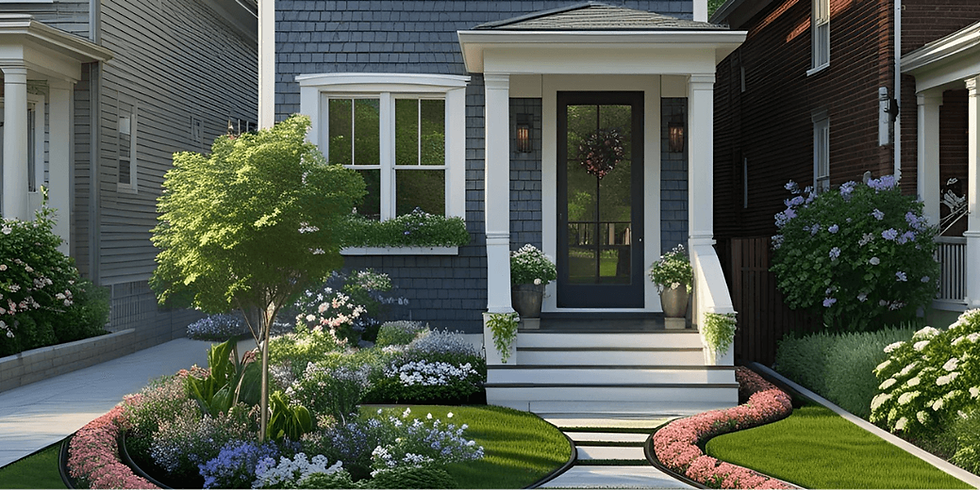
Narrow front yards might seem limiting at first, but with the right design, they can feel intentional, welcoming, and full of character. The trick isn’t to fight the space but to work with it. That’s where smart landscape layout, layered planting, and a few clever features come into play.
In this post, we’re sharing our favorite narrow front yard landscaping ideas that balance budget, beauty, and low maintenance, and all with local know-how that works right here in Central PA.
Key Takeaways
Curved lines, vertical features, and layered planting make narrow front yards feel more spacious.
Low-maintenance plants like native grasses and ground cover simplify care without sacrificing style.
Simple upgrades like edging, lighting, and focal points can greatly enhance curb appeal on a budget.
Work With What You’ve Got: Shape, Slope, Sunlight
Before jumping into new plants or hardscape features, take a step back and look at what’s already there. A narrow yard doesn’t have to mean a small vision, but it does help to understand your layout first.
Is the space shaded by mature trees? Does the ground slope toward the street? Is the lawn more of a corridor than a patch? These little details make a big difference in how your landscaping flows and how well your plants thrive.
Here in Centre County, our soil, drainage, and sun patterns can vary quite a bit from one street to the next. Some small front yards get full sun all day, while others stay shaded under neighboring trees or tucked-in eaves. These conditions affect which drought-tolerant plants or ground cover will work best—and how you can group plants for texture and contrast.
Here is where a good landscape plan really pays off. With a smart layout in place, even a tiny yard can feel like a welcoming outdoor space. Let’s move into some ideas that can boost curb appeal without blowing your budget.
Use Curves and Contrast to Fight the ‘Bowling Alley’ Look
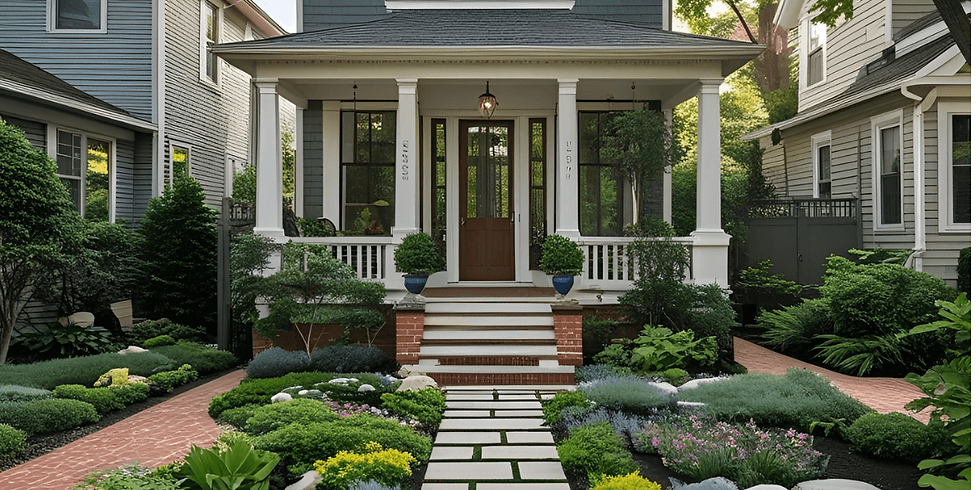
When everything in a small front yard runs in straight lines, from the walkway to the planting beds to the fence, it can make the space feel longer, tighter, and more rigid. One simple fix is to introduce curves and contrast to loosen up the layout and add a more welcoming feel.
Add curves
Start by widening one side of a flower bed and curving it gently inward. This softens the edges and breaks up the corridor effect that many narrow front yards tend to have. Asymmetry works in your favor here. Try placing a cluster of ornamental grasses or native shrubs on just one side to add structure without making things feel crowded.
Mix plant heights
Mixing plant heights and textures also adds visual interest. Varying heights, like a tall, airy grass next to a sculpted evergreen or a mass of low-growing creeping thyme beside a single blooming container, can transform a narrow stretch into a layered, beautiful front yard. Use bold-leaf plants or colorful flowers near key areas like the front door to draw attention where you want it.
Guide the eye with paths
Paths can help too. Gravel walkways or stepping stones aren’t just functional; they guide the eye through the yard, creating flow and giving the illusion of more space. They also happen to be one of the most budget-friendly ways to define movement without pouring concrete or installing complex pavers.
Together, these small shifts of curved lines, visual balance, and layered planting can make even the narrowest space feel like a designed garden rather than an afterthought.
Choose Plants That Earn Their Keep
A narrow front yard doesn’t offer much room for trial and error. Every plant needs to pull its weight by adding structure, color, or movement without asking for constant attention. Fortunately, Pennsylvania’s climate is ideal for many low-maintenance options that can stand up to the seasons and still look good year-round.
Structural plants
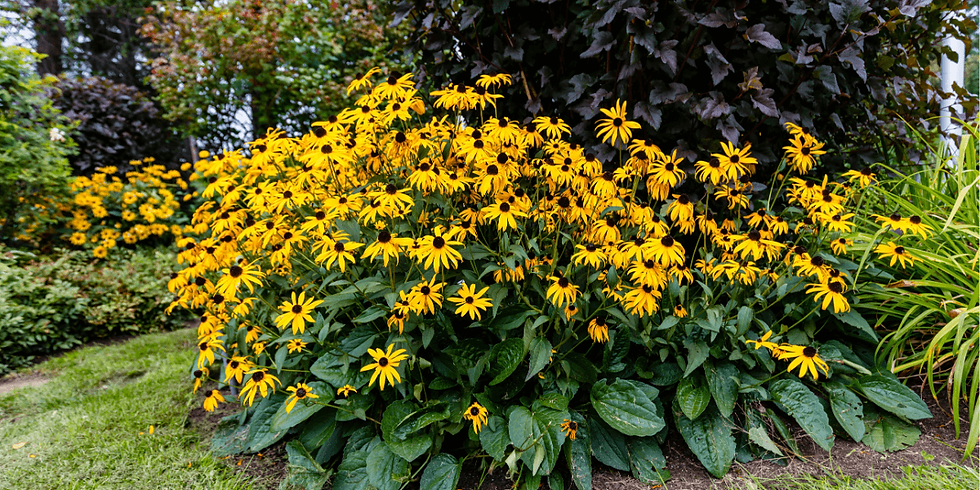
Start with structural plants, like dwarf boxwoods or compact hollies. They bring clean lines and evergreen shape, which help anchor minimalist landscaping or frame a small front porch. Around them, mix in perennials that bring color and durability: coneflowers, black-eyed Susans, and sedum are all great choices for visual appeal with less maintenance.
Ornamental grasses
Ornamental grasses add height and movement, breaking up tight corners and giving your landscape a more natural, flowing feel. Choose varieties that thrive with similar water needs and offer seasonal interest well into fall.
Native plants and grasses
Native plants and native grasses are particularly smart in small yards; they’re already adapted to the local environment, meaning they typically need less watering, less fuss, and attract beneficial insects that support your garden's health. When planted thoughtfully, they create a lush feel without overgrowing the space.
Layering
Smart layering matters, too. Place low-growing flowers and ground covers in front, medium-height perennials in the middle, and taller grasses or shrubs in the back. This setup avoids visual clutter while adding depth, which is a key trick when you're working in a narrow space.
With the right plant mix and a bit of mulch to tie it all together, you can create an aesthetically pleasing, sustainable garden that looks polished without constant maintenance.
Vertical Space Is Your Friend
In a narrow front yard, ground space fills up fast, but there’s still plenty of room to grow. Vertical elements not only save space, they also bring softness and greenery to walls, porches, and fences that might otherwise feel bare or boxed in.
Trellises and walls
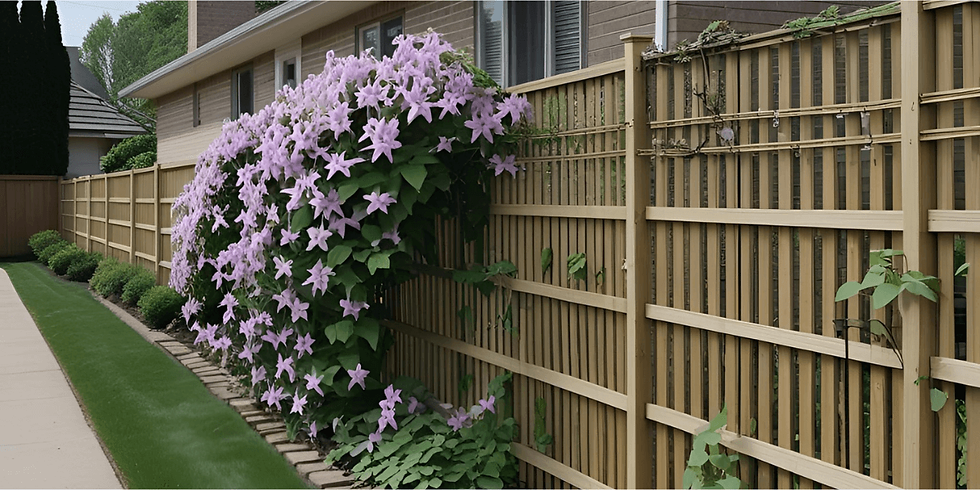
Trellises are an easy starting point. Install one near your porch or along a side fence, then train climbing plants like clematis or honeysuckle to stretch upward. They bloom beautifully, offer seasonal interest, and draw the eye up—instantly boosting curb appeal.
Porch railings or exterior walls can also double as planting space. Wall-mounted planters or hanging baskets filled with colorful flowers, trailing vines, or even small herbs bring charm and texture right to your front door. They're a smart way to make the most of containers without giving up floor space.
Columnar trees
If you're looking for something more structured, columnar trees like ‘Sky Pencil’ holly are perfect for narrow yards. Their slim profile adds vertical drama and privacy without crowding walkways or garden beds. Planted near a fence or raised bed, they offer just enough height to balance out the horizontal lines of the space.
Using vertical space lets you create a layered, modern feel even in tight spots. It’s a simple shift that transforms a flat landscape into a garden with depth, movement, and strong visual appeal.
A Few Hardscape Moves Go a Long Way
Hardscaping doesn’t have to mean tearing everything up and starting from scratch. In a small front yard, the simplest upgrades often make the biggest impact, and they don’t need to be expensive to look polished.
Start with edging
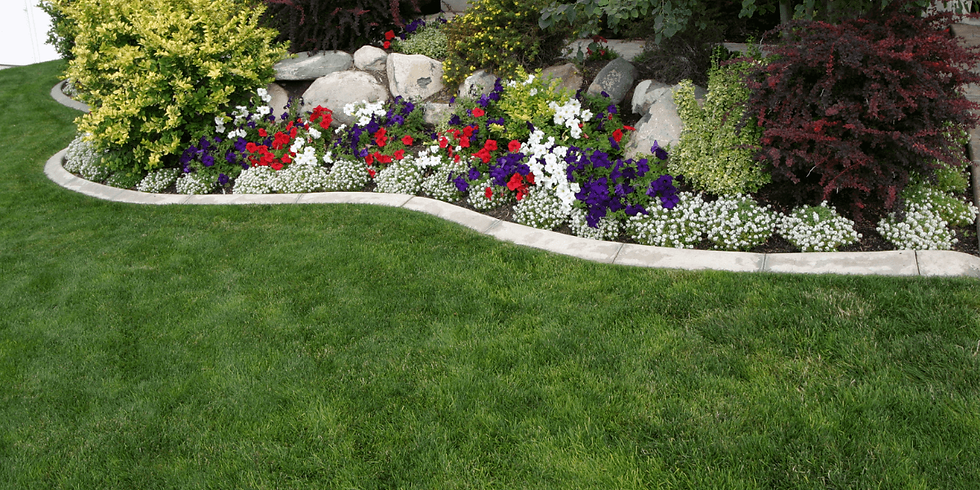
Defining the borders of your garden beds with natural stone, recycled brick, or even locally sourced materials helps create sculpted shapes that feel intentional. This one change can instantly tidy up the look of a yard and give your landscaping a sense of structure.
Add visual weight
If you have a little extra space, consider adding a compact bench, a small bistro set, or a DIY wood feature like a trellis or vertical planter wall. These pieces invite use, add visual weight, and bring a touch of contemporary style to even the most compact gardens.
Mulch and gravel are other budget-friendly materials that reduce mowing, help retain moisture, and visually separate lawn from planting areas. Clean lines between beds and walkways make a narrow space feel more organized—and more spacious.
When you’re working with limited square footage, hardscape details matter more. A few thoughtful materials, used sparingly, can bring cohesion and style to the entire yard, while keeping your home’s curb appeal sharp and your maintenance low.
Light It Up Without Breaking the Bank
A little lighting can do a lot for a narrow front yard. It’s one of the quickest ways to highlight focal points, add safety, and give your home that extra bit of curb appeal, especially after sunset.
Start with solar path lights.
They’re easy to install, energy-efficient, and ideal for guiding visitors along a front walkway or around a garden bed. Place them near sculpted shapes or the edge of a water feature to subtly frame the landscape.
String lights are another affordable option.
Wrap them around a porch post or tuck them into a nearby fence for a soft, welcoming glow that extends your outdoor space well into the evening.
If your yard includes a tree, large shrub, or ornamental feature, try adding a single uplight at its base. This small detail draws the eye upward and creates depth, making the space feel larger and more layered even at night.
Lighting doesn’t have to be complicated or costly to be effective. With a few well-placed pieces, you can create a front yard that’s just as inviting after dark as it is during the day, while still sticking to sustainable options that won’t impact water usage or energy bills.
Small Yards, Big Potential
You don’t need a massive lawn or a big budget to create something special. With the right mix of structure, texture, and thoughtful planting, even the narrowest front yard can become one of the most eye-catching parts of your home.
From curved garden beds and vertical planting to smart hardscape details and lighting that adds evening charm, small spaces offer big creative opportunities. It’s all about working with what you have and making each element count.
If you’ve got a tricky space out front and you’re not sure where to start, Landscape II is here to help. From smart planting plans to full front yard refreshes, we design with your space and your style in mind. Reach out anytime to talk about ideas or set up a free consultation.
Conclusion
A narrow front yard might seem like a challenge at first, but with the right approach, it can turn into your home’s most memorable feature. Thoughtful design doesn’t have to mean over-the-top—it just has to feel like you.
Frequently Asked Questions
What’s a good focal point for a narrow front yard?
A focal point helps anchor your landscape and draw attention where you want it—like toward the front door. In narrow yards, great options include a colorful container, sculpted shrub, or a compact water feature. Even a tall, narrow trellis with climbing plants can add vertical interest without taking up much ground space.
For your backyard, here's a read you might find useful: 10 Best Backyard Ideas on a Budget for Boalsburg, PA
How can I boost curb appeal on a budget?
Small updates go a long way. Defining flower beds with clean edging, adding ground cover around walkways, or layering low-maintenance perennials can all enhance your yard’s visual impact. Solar path lights or a fresh coat of paint on the front door are also affordable touches that instantly lift curb appeal.
What are the best low-maintenance plants for narrow spaces?
Look for native or drought-tolerant varieties that suit our local climate. Ornamental grasses, sedum, black-eyed Susans, and compact shrubs like dwarf boxwoods are excellent for low-maintenance landscaping. Add mulch to keep weeds down and moisture in, and group plants with similar water needs to simplify care.
Find more ideas for your landscape here: Discover Your Landscape Style for Your Home in Boalsburg, PA. And if you have a side yard you want to refresh, this might prove to be an interesting read, 5 Landscaping Ideas for Side of House in Boalsburg, PA
Can I keep mature trees in a small front yard redesign?
Absolutely. Mature trees offer shade, structure, and lasting beauty, plus they’re a major asset for curb appeal. Work around them by shaping flower beds or adding ground cover beneath the canopy. Just avoid overplanting near the roots and consider a focal point or path that gently frames the tree instead of competing with it.




Comments